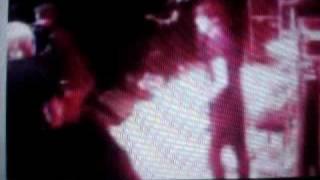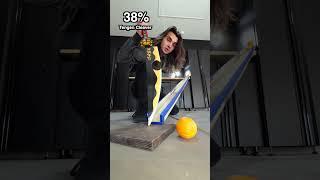
Strv 103 BAR ARMOUR SIMULATION | T-62 vs S-Tank | 115mm 3BM3 APFSDS Armour Piercing Simulation
Some Swedish Strv 103's featured bar armour at the front of the hull to protect against shaped charge munitions as well as damaging or distorting kinetic projectiles. A potential threat to the Strv 103 was the Soviet T-62; the first tank to enter service with a smoothbore gun and fire Armour-Piercing Fin-Stabilised Discarding-Sabot (APFSDS) ammunition.
The 115mm smoothbore gun provided the APFSDS with an exceptional muzzle velocity of over 1600m/s, giving it more penetration than most NATO tanks of the time. It's initial APFSDS round (3BM3) featured a maraging steel body (~650BHN), a tungsten carbide slug, a soft steel cap, and a steel windshield and fins. The slug provided high penetration against vertical armour but could be easily deflected by sloped (or bar) armour.
The simulation shows the 3BM3 impacting the Strv 103 at 1km range, at a lower portion of the upper plate. This area of the upper plate doesnt have the ribbed armour, but instead has spare track links on it. (This area was chosen to save computational time as to hit the ribbed armour the round would have to fly substantially further)
Info on the bars: https://fromtheswedisharchives.wordpress.com/2018/09/01/live-fire-trials-against-strv-103-like-armor-plates-with-bar-armor-1962/
Amazing thumbnail model from: Degitt22 https://sketchfab.com/3d-models/strv-103b-7e7860d15c934104a6cda2259a6ab79d
The 115mm smoothbore gun provided the APFSDS with an exceptional muzzle velocity of over 1600m/s, giving it more penetration than most NATO tanks of the time. It's initial APFSDS round (3BM3) featured a maraging steel body (~650BHN), a tungsten carbide slug, a soft steel cap, and a steel windshield and fins. The slug provided high penetration against vertical armour but could be easily deflected by sloped (or bar) armour.
The simulation shows the 3BM3 impacting the Strv 103 at 1km range, at a lower portion of the upper plate. This area of the upper plate doesnt have the ribbed armour, but instead has spare track links on it. (This area was chosen to save computational time as to hit the ribbed armour the round would have to fly substantially further)
Info on the bars: https://fromtheswedisharchives.wordpress.com/2018/09/01/live-fire-trials-against-strv-103-like-armor-plates-with-bar-armor-1962/
Amazing thumbnail model from: Degitt22 https://sketchfab.com/3d-models/strv-103b-7e7860d15c934104a6cda2259a6ab79d
Тэги:
#strv #s-tank #simulation #sim #perforation #penetration #bar_armour #slat_armour #bar_armor #slat_armor #armor #t62 #t-62 #t-72 #apfsds #apdsКомментарии:
YOUR TIME IS NOW - Best Motivational Speech Video (MUST WATCH)
Motivation2Study
Bullet Jurnal untuk Muslim - Muslimah | Juli 2020
hersmall.project
Как создавать крутые фразы из гамм?
Гитарный душнила
What is The Promise Progress Framework?
The Promise Scotland
Breaking Toilets To Prove a Point • Thief Simulator 2
UberHaxorNova
Apex Protocol - Money Power Women Apex
Сергей Пятницын


























